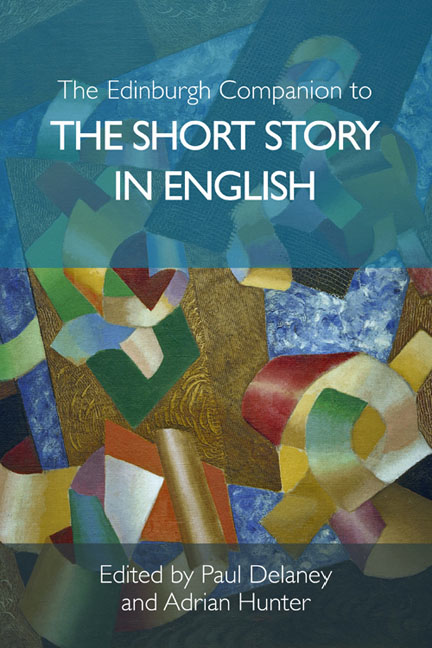Book contents
- Frontmatter
- Contents
- Acknowledgements
- Notes on Contributors
- Introduction
- Part I Historicising the Short Story
- Part II Publishing the Short Story
- 5 The Short Story and the ‘Little Magazine’
- 6 Collections, Cycles and Sequences
- 7 The Short Story Anthology
- 8 The Short Story and Digital Media
- Part III Forms of the Short Story
- Part IV Placing the Short Story
- Part V Identity and the Short Story
- Index of Short Story Titles
- General Index
6 - Collections, Cycles and Sequences
from Part II - Publishing the Short Story
Published online by Cambridge University Press: 18 December 2019
- Frontmatter
- Contents
- Acknowledgements
- Notes on Contributors
- Introduction
- Part I Historicising the Short Story
- Part II Publishing the Short Story
- 5 The Short Story and the ‘Little Magazine’
- 6 Collections, Cycles and Sequences
- 7 The Short Story Anthology
- 8 The Short Story and Digital Media
- Part III Forms of the Short Story
- Part IV Placing the Short Story
- Part V Identity and the Short Story
- Index of Short Story Titles
- General Index
Summary
IN ‘ART WORK’, AT THE CENTRE of The Matisse Stories (1993), A. S. Byatt translates Henri-Émile-Benoît Matisse's aesthetics into fiction. She renders a domestic scene in dynamic sentences that alternate between long and languid and short and layered, resonant with Matisse's experimentations with colour and brushstroke. The story itself concerns a full-time, yet unproductive painter supported by his wife, once a sculptor and now a graphic designer in the magazine business. Their lives are held together by Mrs Brown, who is their maid, nanny and emotional lifesaver. Unbeknownst to them, Mrs Brown turns out to be a wildly talented curator of junk, which earns her the art exhibition and respect the husband so desperately craves. Byatt turns medium into message in this beautiful, humane story; as the wife, Debbie, takes stock of her husband's neorealist productions, which are ‘just this side of kitsch’, she realises that his work is really ‘a serious attempt at a serious and terrible problem, an attempt to answer the question every artist must ask him or herself, at some time, why bother, why make representations of anything at all?’ That is the question that connects the three seemingly disparate stories that make up The Matisse Stories. What is the point of art? Or storytelling? What do we gain by putting pieces of art, junk or stories together?
When Mrs Brown exhibits the mass of stuff she has collected, the public and critics alike love it, because each person leaves impressed with some element. By weaving ostensibly different pieces into a tapestry, she creates something much more meaningful than the singularity of the husband's neorealist representations. In this meta-artistic story, Byatt celebrates the possibilities of the short story collection, sequence or cycle; like the newly lauded Mrs Brown, Byatt knows that stories gain meaning and resonance with accretion and addition. This story's treatment of Matisse's aesthetic, the role of art in everyday life, the buried lives of our intimates, the frustrated ambitions of middle age all recur – in somewhat different forms – in the stories that precede and follow ‘Art Work’. Byatt, working in the late twentieth century, is a particularly emblematic case of a writer who straddles a commitment to realism in plot and characterisation with an experimentalist's fascination with the production and reception of art. Byatt's sequence, then, is one example of a much bigger trend in short fiction.
- Type
- Chapter
- Information
- The Edinburgh Companion to the Short Story in English , pp. 93 - 107Publisher: Edinburgh University PressPrint publication year: 2018



